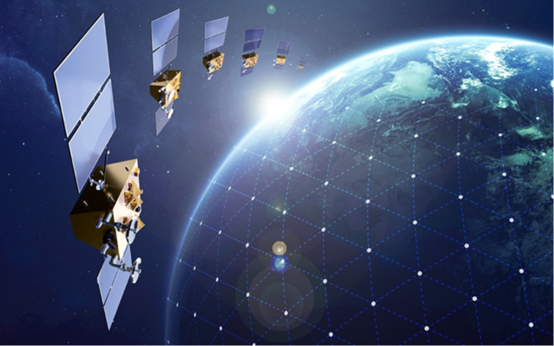- English
- 简体中文
- Afrikaans
- שפה עברית
- icelandic
- Hrvatski
- Монгол хэл
- Lëtzebuergesch
- Español
- Português
- русский
- Français
- 日本語
- Deutsch
- tiếng Việt
- Italiano
- Nederlands
- ภาษาไทย
- Polski
- 한국어
- Svenska
- magyar
- Malay
- Dansk
- Suomi
- Türkçe
- العربية
- Indonesia
- Norsk
- český
- ελληνικά
- فارسی
- български
- Latine
- Slovenský jazyk
- Slovenski
- Srpski језик
- বাংলা ভাষার
- हिन्दी
- Pilipino
- Gaeilge
- تمل
- український
- Javanese
- தமிழ்
- नेपाली
- Burmese
- ລາວ
- Қазақша
- Azərbaycan
Musk's latest prediction: AI may surpass human intelligence in 2030 and may "terminate" humans in the future (2/2)
2024-04-08
Source: Tencent Technology News 2024-04-04 08:55
Key Points:

① Musk predicts that AI may surpass human intelligence level by 2030, and may even terminate humans.
② Musk talked about the factors restricting the development of AI. Last year, the supply of AI chips was tight, and this year, the step-down transformer will become a bottleneck.
③ As for when humans can land on the moon, Musk predicts that with the help of Starship, it will only take three years at the fastest.
3. Neuralink: Merging Humans and Technology

Diamandis: Elon, the concept you mentioned in the early stages of Neuralink is truly shocking. When we previously communicated with Kurzweil, we also delved into the concept of a high-bandwidth Brain-Computer Interface (BCI).
You seem to hold a philosophy of "if you can't beat them, join them", especially when it comes to the integration of the neocortex and the cloud. I'm very curious about this and eagerly anticipating this day. Can you share the deep-seated reasons that drive you to explore adding extra computational and sensory capabilities to the neocortex?
Musk: Actually, this idea originated from Ian Banks's "Culture" series, which I highly recommend to everyone. It depicts a technology called neural lace, which is essentially a high-bandwidth brain-computer interface shared by humans. In the book, this technology not only preserves all memories and brain states but also allows people to be reborn in a new physical body with almost all their original memories and brain states intact, even after their physical body ceases to exist. Although we are still far from this goal, Neuralink has taken the first step towards connecting with humans and is progressing smoothly.
We call our first product "telepathy", which enables users to control computers and mobile phones, and almost any device, through thought. You just lie there and think, and you can move the mouse cursor around the screen, doing various things. Excitingly, our first patient has agreed to a live demonstration. He is a tetraplegic patient who will be able to control the screen, play video games, download software, and perform various operations through thought.
Of course, there is still a long way to go from the current Neuralink to a full-brain interface. The current Neuralink only has 1000 electrodes, and I think we may eventually need a device with 100,000 or even 1 million electrodes. These electrodes are extremely tiny, as thin as hair, or even thinner. Therefore, it will take a long time and a lot of effort to go from the current state of Neuralink to the full-brain interface described in Banks's novel. However, physically, this is entirely feasible.
Diamandis: We have witnessed your brilliant journey from Roadster to Model 3, Model Y, and from Falcon 1 to Starship. Therefore, I believe that from the first implantation to technological maturity, it is only a matter of time, not possibility.
Musk: Indeed, with the continuous advancement of technology, we hope to achieve a complete brain-computer interface in the future. I believe that uploading brain states through a brain-computer interface and achieving some form of backup can be seen as a form of immortality. If the brain state can be stored, theoretically, we can restore it to a biological or robotic carrier at any time. However, I must emphasize that this is still a distant goal that requires long-term exploration and effort.
But the good news is that we haven't violated any physical laws, so this vision is theoretically possible. Of course, this requires the assistance of digital superintelligence to solve many technical problems. But at the same time, we will continue to utilize our "physical computers" and do our best work.
4. One Step Closer to Multi-planetary Life
Diamandis: My friend, finally, we have our first conversation in the space sector. I want to start by congratulating you on building the "Starship". The recent flight was truly a spectacular feat. I am deeply grateful for the work you are doing. You know, I grew up in the aftermath of the Apollo missions and entered the era of the Space Shuttle, but I never imagined that you could advance space exploration so quickly and dramatically. So, I can only describe what you have done as "absolutely amazing".
Musk: SpaceX has ambitious goals, hoping to someday create rockets and spacecraft that can make life multi-planetary. Setting such goals is the first step towards success. Without such goals, achievement is naturally out of the question; but with them, at least we have the possibility of achieving them.
The "Starship" is such a milestone. It makes multi-planetary life possible for the first time, at least opening up new possibilities for us to build self-sufficient cities on Mars. Of course, there is still a lot of work to be done to achieve this, but the "Starship" has undoubtedly taken this crucial step.
Diamandis: I'm curious, would you be willing to predict when we might be able to land on the moon using the "Starship"?
Musk: I think it shouldn't be too far off. I would be very surprised if we haven't landed on the moon within three years. We will use the "Starship" for the mission because its progress is very rapid. We plan to conduct at least five to six more flight tests this year, and each flight will bring significant technical improvements. Therefore, I am very confident that we can achieve full reusability of boosters and spacecraft in the near future. Even if it doesn't happen this year, I believe there is a high possibility it will happen next year. This will be a critical breakthrough needed to achieve multi-planetary life.
For those who are not familiar with rocket technology, they may not know the significance of full and rapid reusability to rocket technology. This is actually the Holy Grail of the rocket industry because once achieved, the launch cost of rockets will be significantly reduced, mainly limited only by the cost of propellant. Nearly 80% of the "Starship's" payload is liquid oxygen, which is a very low-cost propellant. The remaining 20% or so is methane, which is also a relatively low-cost fuel. So, when the "Starship" achieves full and rapid reusability, the actual cost per flight may be very low, even though it can carry a 200-ton payload into orbit.
More specifically, if most components of the "Starship" can be reused without tedious refurbishment work, its maintenance will become as simple as that of an airplane. When full reusability becomes a reality, there will be no additional work required between flights, and the cost will mainly focus on propellant. The cost per flight may be less than $1 million. Then it's a matter of flight frequency. The more flights there are, the lower the average cost per flight will be, which will make the "Starship's" performance far superior to any other delivery vehicle.





